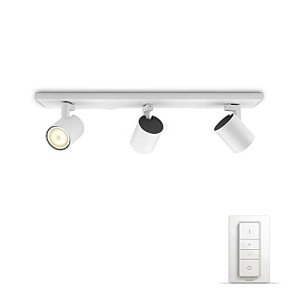Contemporary Lighting in the UK: Transforming Spaces with Illumination
Lighting plays an essential role in defining the ambiance and functionality of any space. In the UK, contemporary lighting has become a substantial design element, offering innovative options that blend looks with usefulness. This short article explores the various designs, products, and technologies forming contemporary lighting, together with tips for picking the most appropriate fixtures for different settings.
The Evolution of Contemporary Lighting
Contemporary lighting in the UK reflects the changing tastes and technological developments in design. It encapsulates a wide variety of designs, including:
- Minimalist: Characterized by simplicity and clean lines, minimalist lighting fixtures concentrate on type and function without unnecessary decorations.
- Industrial: Inspired by city settings, industrial lighting combines raw materials like metals and woods with vibrant designs, developing edgy, functional pieces.
- Scandinavian: Known for its warmth and simplicity, Scandinavian lighting typically includes soft colors and natural products, focusing on creating a relaxing environment.
- Smart Lighting: This modern pattern integrates technology with design, allowing users to manage their lighting with mobile apps, voice commands, or automation systems.
To illustrate the evolution and range in the field of contemporary lighting, consider the table listed below, which highlights crucial attributes of different styles.
| Design | Key Characteristics | Popular Materials | Suitable Spaces |
|---|---|---|---|
| Minimalist | Basic, practical designs | Metal, glass, wood | Modern homes, workplaces |
| Industrial | Raw, incomplete appearance | Steel, concrete, wood | Lofts, galleries |
| Scandinavian | Relaxing, warm looks | Natural fibers, light wood | Living spaces, coffee shops |
| Smart | Integrated innovation, automation | Differs widely | Homes, offices, retail spaces |
Choosing Contemporary Lighting Fixtures
Selecting the right lighting fixtures for a space requires cautious factor to consider of a number of factors. Here are crucial elements to remember:
1. Purpose of the Space
Before selecting fixtures, consider the desired usage of the area. Different functions require different types of lighting:
- Task Lighting: Focused lighting for activities such as reading, cooking, or studying. Examples include table lamps and under-cabinet lights.
- Ambient Lighting: General lighting that supplies general lighting. Ceiling lights and pendant fixtures fall under this category.
- Accent Lighting: Designed to highlight specific features or locations, such as art work or architectural details. Wall sconces and track lighting prevail choices.
2. Style and Theme
The lighting needs to complement the existing decor. Select fixtures that match or improve the overall style of the area, whether it's contemporary, rustic, or diverse.
3. Size and Scale
Think about the percentage of the lighting fixtures relative to the area. A large chandelier might look stunning above a spacious table, while smaller sized pendant lights work well in compact settings.
4. Energy Efficiency
With increasing energy costs and environmental issues, choosing energy-efficient lighting options is essential. LED lights are an excellent option, providing longevity and lower energy usage.
5. Versatility
In modern design, versatility is essential. Fixtures that can be adjusted or repositioned boost performance, permitting users to develop different atmospheres as needed.
Popular Contemporary Lighting Brands in the UK
The contemporary lighting market in the UK boasts various brand names understood for their innovative styles and quality workmanship. Some noteworthy points out include:
- FLOS: An Italian brand celebrated for its artistic and iconic light fixtures that often function as pieces of art.
- Tom Dixon: A British designer acknowledged for his modern, industrial styles that magnificently integrate metal and light.
- Anglepoise: Known for its versatile, functional lamps, perfect for a variety of settings from home offices to creative studios.
- John Lewis: Offers a range of contemporary lighting services that deal with a wider audience, including affordable yet stylish choices.
Frequently Asked Questions about Contemporary Lighting in the UK
1. What is contemporary lighting?
Contemporary lighting describes lighting designs and fixtures that reflect present design trends, often defined by clean lines, innovative shapes, and the use of modern products and technologies.
2. How do I pick the best lighting for my home?
Think about the function of the room, existing décor, size of fixtures, energy effectiveness, and flexibility. Evaluate how each piece will contribute to the total atmosphere and performance of your area.
3. What are some energy-efficient lighting choices offered in the UK?
LED lights are the most prominent energy-efficient alternative, understood for their long life expectancy and low energy consumption. Compact fluorescent lights (CFLs) and halogen bulbs are other alternatives.
4. Where can I shop for contemporary lighting in the UK?
Contemporary lighting can be discovered in numerous retail outlets, both online and in physical shops. Buy Designer Lighting UK include John Lewis, Habitat, and specialized lighting stores.
5. Can contemporary lighting work in traditional areas?
Absolutely! Contemporary lighting can boost traditional spaces when chosen attentively. Choosing Rustic Lamps UK with a balance in between modern and traditional elements can produce an unified design.
Contemporary lighting in the UK represents more than just illumination; it embodies style innovation and creativity, changing areas and enhancing functionality. As patterns continue to progress, homeowners and designers alike can explore an expansive variety of designs and technologies, making sure that every room bursts with life, warmth, and character. By thinking about the vital elements laid out in this short article, one can curate a collection of lighting fixtures that resonates with individual design and meets useful requirements, eventually forming comfortable and aesthetically attractive environments.

